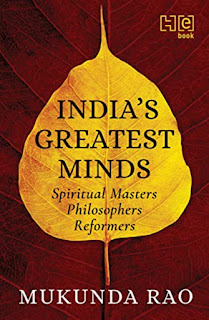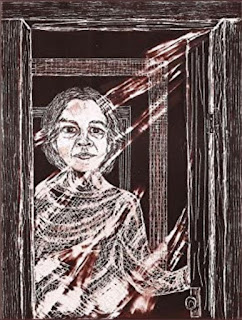In Search of Enlightenment
The Sunday Observer, Review, Bombay, July 4, 1982
By K D Katrak
Once upon a time there was a little boy who was brought up by his grandfather (an ardent Theosophist), on the Upanishads and Panchadasi and the Naishkarmya Siddhi. The little boy wanted like anything to be Enlightened and wondered what the ‘state’ of the Buddha and Jesus might be. He went through the usual disciplines, studied, pondered, meditated, and by the time he was twenty-one had reached the conclusion that the Buddha, Jesus and Ramakrishna were bogus. A friend took him to see Ramana Maharshi. ‘Can you give me what you have?’ he asked him. Ramana replied, ‘I can, but can you take it?’ which turned the boy off.
But he plugged on, joined the Theosophical Society, lectured, got involved with J Krishnamurti, rejected J Krishnamurti, blew his money, starved in London (and by his own admission) developed clairvoyant powers. But this was not what he wanted: he still wanted Enlightenment. So when after great bodily pain, his first sensory dislocations occurred and the ‘continuity’ of his mind went out of gear and this state crystallized and became permanent, he thought: ‘this is Enlightenment.’ After all had he not developed all kinds of stigmata where the Tantric chakras are supposed to be located? Had he not experienced a sense of less of body? So then? He called his ‘Enlightenment’ ‘The Calamity’ and lived not too happily ever after.
This is a cruel and unfair way of beginning this review. The book is about a man who is patently honest, and by his face on the dust jacket, clearly decent. But by my lights he is deluded and I see no other way of cutting through the extraordinary muddle of the book. U.G. Krishnamurti's experience is perfectly ‘authentic’ in that it is ‘real’. But what he makes of it and its implications is rubbish.
My dictionary defines ‘Mystery’ as ‘Hidden or inexplicable matter, truth known only by divine revelation.’ And ‘Mystique’ as atmosphere of mystery...professional skill or technique which mystifies and impresses the layman.’ That Enlightenment of which Kabir said: ‘how the whole Ocean can be contained in a single drop is the final mystery’ has come to mean for Mr U G Krishnamurti a ‘declutched mind.’ The title of the book has a deadly accuracy. Truly, he has taken that final Mystery and reduced it to ‘mystique’.
Such curiously unintentional but meaningful mishaps flourish in this maddeningly mixed book. This ‘Yoga Bhrashta’ is taken to mean ‘someone who has come within inches of enlightenment’. It means simply ‘Fallen from Yoga’. This is the problem of not working in a Tradition. In fact you can be damned either way. Work in a tradition and you are usually bound by it and overwhelmed by dogma. Even your ‘seeings’ if they ever occur are in that mode. Work alone and you have no standards of comparison and no correctives.
When Tieh Shan was struck by the thunderbolt of satori, he walked into the Meditation Hall, dragged his teacher Meng Shan off his throne and sat on it himself. Meng Shan wordlessly pushed Tieh Shan away and re-installed himself. ‘You don't understand’ cried Tieh Shan. ‘What do I lack? Tell me!’ ‘I understand well enough’ rejoined Meng Shan. ‘It's taken you long enough to get here, now get on with your job. It will take you thirty years to graduate.’
Working within a real tradition, someone might have explained the ‘psychological’ changes to Krishnamurti II. There is a fairly well known psychosomatic type classified as ‘hysteric’ who is often attracted to ‘spiritual affairs’ in whom ‘siddhis’ predominate; from clairvoyance and materialisation to bodily stigmata and levitation. Thus St Teresa of Avila as a relative novice was often found in an ecstatic state near the ceiling of her cell. St John of the Cross, her spiritual preceptor had to read her the hard facts. The mind he told her was not equipped to handle two matters simultaneously. If it was full of her aerial delights it could not have room for the Christ. As it happened she listened to him, and the woman who lived to write ’The Interview Castle’ was no joyful levitationist.
There are all kinds of traps, at every level of the World Mountain. Bombay's Grand old Maratha Sage Nisargadatta Maharaj once told me how he used to cure the ailing by ‘magnetising’ glasses of water, till his teacher pulled him up short. ‘My Guru was very hard on me,’ he reminisced softly: ‘it was a wise harshness. He never allowed me to become a great man.’ Not everyone has the great fortune to be told this. There is the famous saint, benevolent enough, who draws immense crowds and has been materialising all kinds of things for two decades now.
In the end one is suspicious of a book that defines its attainment in precisely the terms it puts down. Take the opening passage spoken by Krishnamurti II: ‘You see, I maintain that – I don't know, whatever you call this: I don't like to use the words ‘enlightenment,’ ‘freedom,’ ‘moksha,’ or ‘liberation,’ all those words are loaded words, they have a connotation of their own – this cannot be brought about through any effort of yours: it just happens. And why it happens to one individual and not another I don't know.’
Q: So it happened to you?
U G: It happened to me?
‘Yes’ one wishes to scream but what happened? This man lies in bed, is unable to conceptualise and feel his own body and so believes he has arrived at the flowering of the human state.
I am suspicious too at UG's attitude to Krishnamurti I. He rails against him but cannot dismiss him. His description of his ‘calamity’ owes far too much (perhaps subconsciously) to Jiddu Krishnamurti's Ojai Valley experiences. If you expect things to happen in a certain mode with sufficient intensity, that I suppose is how they will happen.
In the end it is not what happens to you that matters but the emotional content of the experience. Castaneda's teachers tried drugs on him and in the end failed. You might get the same thing from LSD but it would be what the rishis call ‘bhuta’: vision of form without feeling. And when everything is said it it is feeling that liberates. Just as it is the acknowledgment of the human implications of that feeling and the adoption of a truly human stance, that proves the liberation. So when Krishnamurti II professes lack of interest in his fellow man I am not surprised. ‘There is no Truth outside of man,’ says UG. I have no reason to doubt the honesty of this reporting. But it is not the Truth I am after. For the truth is more than mere fact. It must be meaningful fact. And that meaning must have the enabling power to help me shape my life.
A truth that is human must possess the appropriate human feeling. My point is made and need not be rubbed in further. But this much, in fairness, needs to be added. In an age of manipulative Slave Masters whose true ‘avatar’ is Rajneesh, UG Krishnamurti constitutes an honest, muddled, minor voice for whom we must be thankful.



